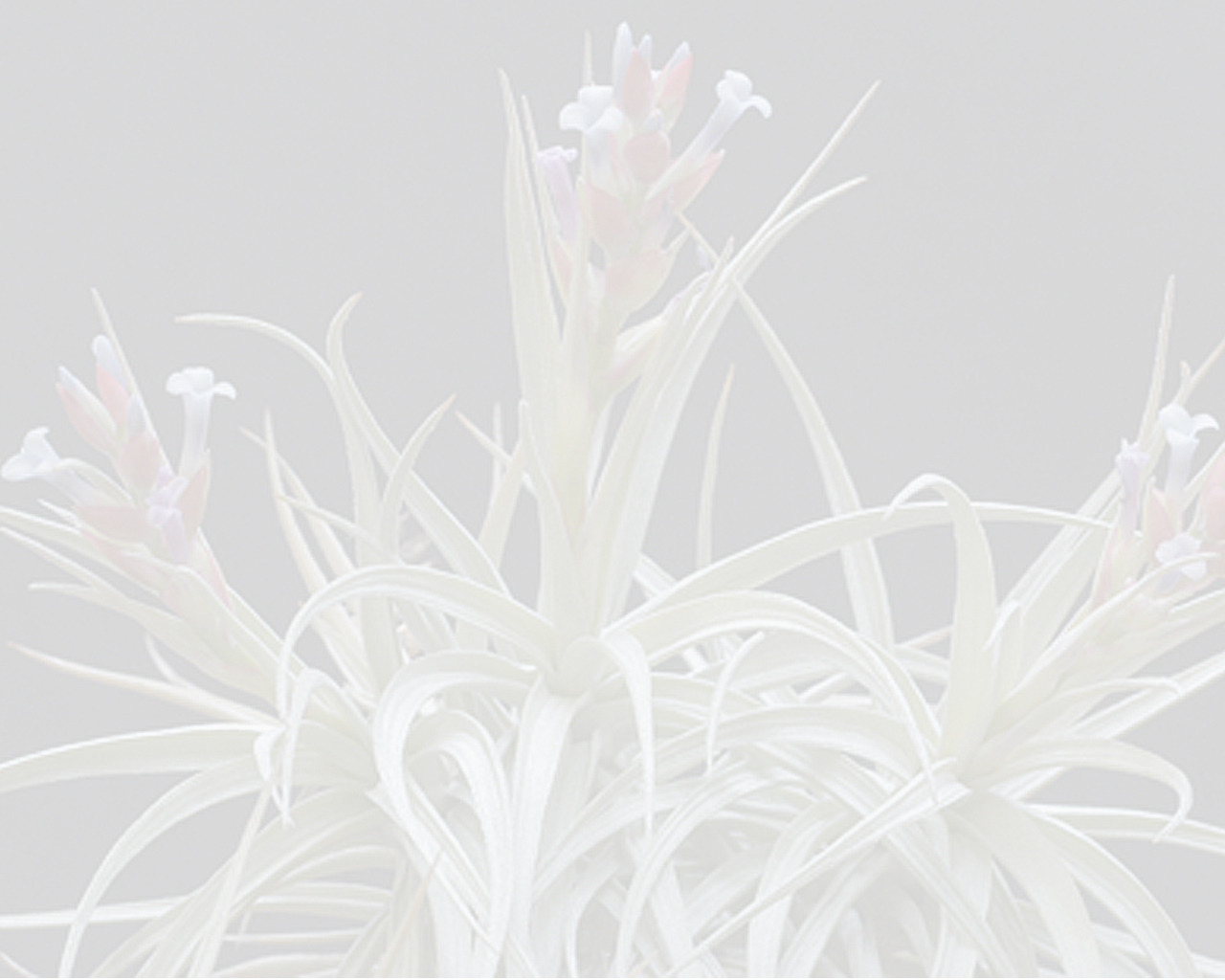

 Tillandsia inanis Lindl. & Paxt.[as Tillandsia inanis Lindl.in Lindley & Paxton]
Tillandsia inanis Lindl. & Paxt.[as Tillandsia inanis Lindl.in Lindley & Paxton]Diagnose: —Folia radicalia basi dilatata bulbum simulantia T. inanis; scapo foliis breviore, spica simplici basi foliosa, bracteis viridi-purpureis lepidotis inferioribus omnibus inanibus – Buenos Ayres 211. T. bulbosa (Hook. Exot. Fl., t. 173); scapo foliis breviore, spica aphylla basi ramosa, bracteis herbaceis arcte lepidotis, - Trinidad 212. T. erythraea ( alias T. bulbosa picta Hooker, Bot. Mag., t.4288); scapo foliis breviore, spica ramosa, bracteis foliaceis coccineis nudis (?) infimis spica longioribus, - Jamaica; Para 213. T. eminens; scapo foliis altiore, spica aphylla ramosa, bracteis nudis coccineis distichis carinatis apice uncinatis. – St. Domingo. The inflorescence is almost that of a branched Vriesia. 214. T. pumila; scapo inter folia sessili, spica subsimplici aphylla, bracteis herbaceis coriaceis ventricosis laxissime lepidotis, - Para. Valves of the fruit straight, and chestnut brown; not pitch black, as in T. erythraea. Observations: —This is nearly related to the plant named T. bulbosa by Sir W Hooker, and figured in the “Botanical Magazine” t. 4288, under the name of T. bulbosa, variety picta. There appears to be several species of Tillandsia possessing the peculiarity of having the bases of the enlarged leaves collected into a kind of bulb, but otherwise differing as much among each other as species of the same genus generally do. Since some are beautiful things, and very likely to reach our gardens, we take the present opportunity of pointing out in what we conceive their peculiarities to reside. In the first place, there is the original T. bulbosa, whose spike has all the bracts green and fertile, with some tendency to branch. Next it stands our T. inanis, with a perfectly simple spike, whose bracts are coloured red, and all flowerless, except the two uppermost. Another is the supposed variety of T, bulbosa, already mentioned, with the upper leaves and bracts very long, deep crimson, apparently not scurfy, and a spike distinctly branched; the corolla being longer and white-edged; this we would call T. erythraea; we have the same species from Para. A fourth, T. eminens, is a St. Domingo, with the leaves much shorter than the spike, which is leafless, branched, and composed of numerous two ranked crimson-keeled naked bracts; it may be compared to. T. polystachya, although very different. A fifth is from Para and is readily distinguished by a peculiar lumpish habit, an abundance of very coarse loose scurfs, spreading up to the very points of the outer bracts, which are not coloured, and a nearly simple spike sessile among the leaves, which nevertheless, scarcely overtop it; this may be named T. pumila. For the convenience of our scientific readers, we put these distinctions into technical language; -Edited from (09-11-2014): Paxt. Flow. Gard.. (protologue) .